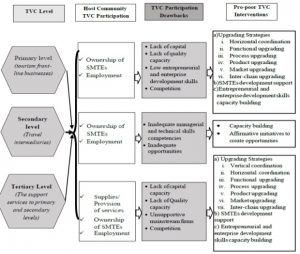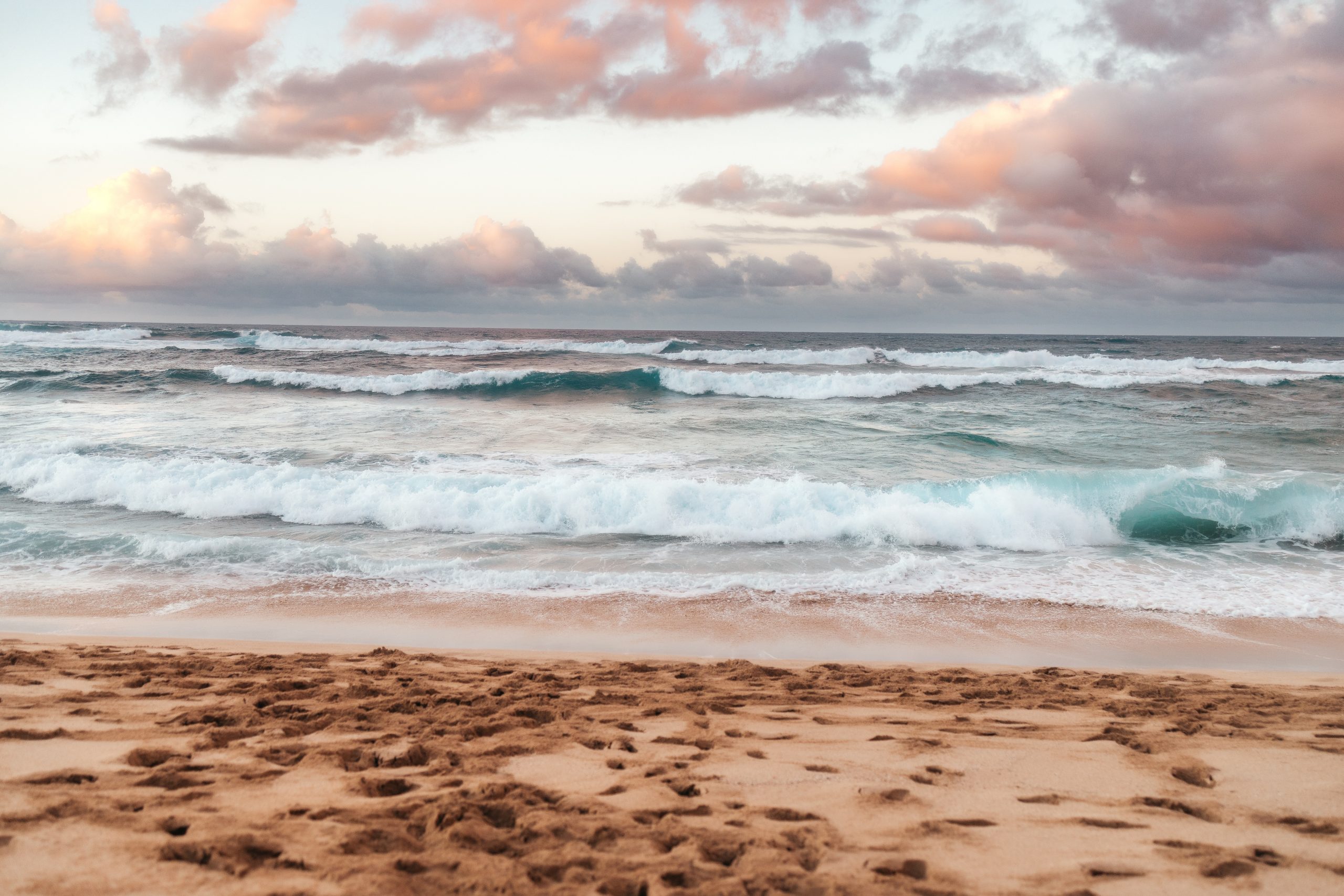The ocean and the marine environments continue to be the fastest-growing areas of the world’s tourism industry, accounting for a significant share of global tourism receipts and arrivals, supporting jobs and economies in more than 70 countries and territories across the world[1]. Indeed, approximately 30 percent of global tourism activities take place in coastal areas and regions[2]. Further, according to the UN World Tourism Organization (UNWTO), one out of every two tourists travels to a coastal area[3]. In small island developing states (SIDS), the tourism sector is considered the main source of foreign exchange, contributing about US$220 billion worth of ocean consumer products and services globally[4]. With the massive growth of global cruise tourism (including a 75 percent increase in passenger numbers between 2008 and 2018[5]), coastal tourism appears even more promising. And yet the question of equity in the share of economic benefits remains, especially with respect to the local communities. In a thought-provoking article, Rob Brumbaugh and Pawan Patil assert that ‘investing in ocean health is synonymous with generating ocean wealth’[6]. But ocean wealth for whom? This question entails two others: first, How linked is the ocean economy, and particularly the tourism industry, to the local community and what constraints, if any, limit linkages? and second, How can economic benefits realised by the local communities be enhanced? This paper seeks to answer these two questions.
Challenges related to coastal and marine tourism
Although coastal and marine tourism offers significant socioeconomic benefits to the host economy, the industry can also bring to destinations numerous negative social, environmental and economic impacts. In most cases, investors in coastal tourism are both physically and socially far removed from the area. In essence, the interest of such investors is primarily profits, with little concern for development or possible degradation of quality of life at the destination[7]. As noted by the UN Environment Programme Division of Technology, Industry and Economics, tourism investors and developers pressure governments to spend public money on improving infrastructure and services essential for the industry, on promotion campaigns and on tax breaks and other financial incentives. This comes at the expense of needed services like health and education.
In addition, while coastal tourism can increase employment opportunities for both locals and outsiders, lean seasons and other tourism crises often result in mass unemployment, with its social consequences. In addition, tourism development may increase the cost of basic products and services and real estate, rendering them inaccessible to the local population[9].
Especially in developing countries, the integration of locals into the tourism value chain is limited by a number of constraints. These include a lack of human capital, financial capital, organisation and market power resulting from difficulties on ownership or control over resources; low bargaining power vis-à-vis foreign tourism investors; and limited capacity to meet international standards for service and management[10]. Others constraints include unfavourable regulations and red tape, including exclusion from registered and promoted categories of tourism facilities and services, resulting in inadequate access to the tourist market; limited official focus on developing alternative markets such as domestic, regional or independent tourism markets; and government support that is mainly targeted at the formal sector[11]. Of even greater concern is that mainstream tourism companies, especially hotels, often have difficulty making purchases from small local suppliers[12].
The case of Zanzibar, a SIDS, demonstrates this state of affairs. A study titled ‘Tourism: More Value for Zanzibar’ identified the following key issues as limiting locals’ participation in the tourism value chain (TVC): a business environment that does not favour small industry; Zanzibaris’ very limited access to employment in the tourism sector due to limited training facilities; a limited supply of accommodations owned by Zanzibaris, with most high-quality accommodation units owned and managed by foreigners; the inability of suppliers of local goods to meet the quality required for the general operation of tourism-sector businesses; the low quality and reliability of supplied goods to the tourism industry; issues with the establishment and running of small and medium-sized tourism enterprises, including low business-development skills among the poor; and the expansion and growth of the tourism industry as an indirect pro-poor strategy not being seen as a viable strategy for pro-poor growth.
The local community’s weak engagement in the tourism value chain results in much of the tourist spending leaking away from the developing destinations, while the remainder mainly benefits the society’s elite,.
Towards ensuring equity in coastal and marine tourism: Practical and policy interventions
Efforts to deepen tourism linkage with other sectors of the local economy have been pursued as a way of checking economic leakage and enhancing broader economic development[14]. A number of approaches have been formulated to pursue this goal, all of which can be applied in coastal and marine tourism.
The pro-poor tourism (PPT) approach advocated for in the 1970s and 1980s was the first deliberate attempt to use tourism to reduce poverty[15]. This approach hinged on the World Bank’s concept of pro-poor growth, which sought to distribute incomes accruing from a country’s economic growth in favour of the poor[16]. The PPT approach has always been closely associated with community-based tourism (CBT), a form of sustainable tourism in which local residents (often rural, poor and economically marginalised) invite tourists to visit their communities and provide them overnight accommodation. The residents earn income as land managers, entrepreneurs, service and produce providers, and employees. At least part of the tourist income is set aside for projects which benefit the community as a whole[17]. In essence, CBT is about social justice, empowerment, equity of benefits, redistributive measures, ownership of the tourism sector and holistic community development[18]. However, although CBT has been credited with engaging and training poor communities and distributing proceeds across a large number of households[19], the model has a number of limitations. For instance, the benefits to the community are not financially sustainable owing to factors including lack of a trade-off between costs and revenues, commercially unsustainable products, weak market linkages, increasing peasant differentiation, social unrest, problems with local decision-making, lack of local tourism business knowledge and training, pseudo-participation and work and time restructuring[20]. These weaknesses make CBT an ineffective avenue for sustainable community economic empowerment through tourism. Further, CBT emphasises community benefits as a motivation for conservation. This non-economic focus limits its potential to generate meaningful and sustainable economic outcomes[21].
Mapping the tourism value chain is another approach that generally seeks to deepen tourism linkage with other sectors of the local economy in order to check economic leakages and enhance broader economic development[22]. The TVC logic specifically seeks to integrate the host economy into the different ‘nodes’ (businesses) involved in the entire visitor trip lifecycle covering the planning and commencement of travel, stay at the destination and return travel to the region of origin[23]. TVC analysis examines each node to identify the short-, medium- and long-term potential interventions that could increase economic benefits for the target groups, or even contribute to the general competitive development of the tourism destination as a whole[24].
In a paper written with L. Cantoni, I have critiqued the three earlier approaches and propose the pro-poor tourism value chain (Figure 1) as a framework for enhancing host communities’ participation in the mainstream tourism industry, with particular attention to developing destinations[25]. Based on this framework, a systemic approach to interventions can be employed to enhance the involvement of and benefits to local communities arising from coastal and marine tourist destinations. This systemic approach is based on four prerequisites:
- TVC opportunity mapping of the different TVC levels and nodes to identify opportunities in which host communities can effectively participate.
- Estimating the nature and extent of host community involvement in identified TVC nodes.
- Uncovering the constraints to participation by host communities in identified TVC nodes and opportunities.
- Exploring appropriate interventions to enhance the participation of host communities in the TVC, including policy and practical interventions.

Figure 1
Notes: SMTE = small and medium tourism enterprise; TVC = tourism value chain.
Source: R.M. Ndivo and L. Cantoni, “Economic Empowerment of Communities through Tourism: A Pro-poor Tourism Value Chain Approach,” Advances in Hospitality and Tourism Research 3, no. 2 (2015): 116–34.
Conclusion
The immense potential of coastal and marine tourism to host economies is widely acknowledged. However, the extent to which local communities within developing coastal and marine destinations benefit from the industry is limited by several constraints in technical, entrepreneurial and capital capacity; the facilitative regulatory and policy framework; and the general industry structure. The key to increasing the benefits to local communities from coastal and marine tourism, and reducing impacts on local communities that widen inequalities, lies in a deliberate systemic approach to integrate the local community into the mainstream tourism industry, in some cases through affirmative interventions.
Such interventions would focus on policies and practices in both the public and private sector. For instance, requiring that a given percentage of jobs, supplies or even businesses be reserved for locals, or tourism business support for human resource development enabling locals to work in the sector. A number of such interventions are already happening on Kenya’s coast and in its national parks, as I showed in a recently concluded study on the potential of green tourism value chains in Kenya in the context of the African Continental Free Trade Area[26]. The study reports cases of hotels with capacity-building programmes and policies on the percentage of employees to be hired from the local community. A case in point was a five-star hotel that developed a programme to train high school leavers in different areas of the hotel, then hire them. They later receive refresher courses at Kenya Utalii College. In another case reported in the study, a lodge in Amboseli National Park has a policy of purchasing at least 30 percent of its food from the local community. The facility shares its standard purchase specifications with local suppliers to enable them meet quality specifications.
The pro-poor TVC interventions provide a sure pathway to ensuring that by 2030 ‘Coastal and ocean-based tourism is sustainable, resilient, addresses climate change, reduces pollution, supports ecosystem regeneration and biodiversity conservation and invests in local jobs and communities’, as outlined in the Ocean Panel report Transformations for a Sustainable Ocean Economy.[27]
—–
[1] R. Brumbaugh and P. Patil, “Sustainable Tourism Can Drive the Blue Economy: Investing in Ocean Health Is Synonymous with Generating Ocean Wealth,” World Bank Blogs, 22 May 2017, https://blogs.worldbank.org/voices/Sustainable-Tourism-Can-Drive-the-Blue-Economy.
[2] T. Ghosh, “Coastal Tourism: Opportunity and Sustainability,” Journal of Sustainable Development 4 (2011): 67–70.
[3] World Tourism Organization (UNWTO), Aid for Trade and Value Chains in Tourism (Madrid: UNWTO, 2013); Brumbaugh and Patil, “Sustainable Tourism Can Drive the Blue Economy.”
[4] UNWTO, “Tourism in Small Island Developing States (SIDS),” 2014, https://www.e-unwto.org/doi/pdf/10.18111/9789284416257#:~:text=As%20one%20of%20the%20fastest,Competing%20in%20the%20global%20market; P. Karani and P. Failler, “Comparative Coastal and Marine Tourism, Climate Change, and the Blue Economy in African Large Marine Ecosystems,” Environmental Development 36 (2020): 100572.
[5] European Commission, The EU Blue Economy Report 2020 (Luxembourg: Publications Office of the European Union, 2020).
[6] Brumbaugh and Patil, “Sustainable Tourism Can Drive the Blue Economy.”
[7] J.D. Kline, Tourism and Natural Resource Management: A General Overview of Research and Issues (Washington, DC: U.S. Department of Agriculture, 2001).
[8] UNEP Division of Technology, Industry and Economics (UNEPTIE), Sustainable Development of Tourism, UN Environment Programme, 2006.
[9] UNEPTIE, Sustainable Development of Tourism.
[10] R.M. Ndivo and L. Cantoni, “Economic Empowerment of Communities through Tourism: A Pro-poor Tourism Value Chain Approach,” Advances in Hospitality and Tourism Research 3, no. 2 (2015): 116–34; R.M. Ndivo and L. Cantoni, “Rethinking Local Community Involvement in Tourism Development,” Annals of Tourism Research 57 (2016): 275–78; I. Lejarraja and P. Walkenhorst, “Diversification by Deepening Linkages with Tourism,” World Bank, International Trade Department, 2007; C. Ashley, D. Roe and H. Goodwin, Pro-poor Tourism Strategies: Making Tourism Work for the Poor, Pro-poor Tourism Report no. 1 (London: Overseas Development Institute, International Institute for Environment and Development, and Centre for Responsible Tourism, University of Greenwich, 2001).
[11] Ndivo and Cantoni, “Economic Empowerment of Communities through Tourism,” 118.
[12] Ndivo and Cantoni, “Economic Empowerment of Communities through Tourism.”
[13] UNWTO and Stichting Nederlandse Vrijwilligers, Manual on Tourism and Poverty Alleviation: Practical Steps for Destinations (Madrid: UNWTO, 2010); Akama (1999); W. Jamieson, H. Goodwin and C. Edmunds, “Contribution of Tourism to Poverty Alleviation: Pro-poor Tourism and the Challenge of Measuring Impacts,” UN Economic and Social Commission for Asia and the Pacific, Transport and Tourism Division, 2004.
[14] C. Ashley and J. Mitchell, “Doing the Right Thing Approximately Not the Wrong Thing Precisely: Challenges of Monitoring Impacts of Pro-poor Interventions in Tourism Value Chains” (London: Overseas Development Institute, 2008).
[15] Department for International Development, “Tourism and Poverty Elimination: Untapped Potential,” 1999; T. Sofield, J. Bauer, T.D. Lacy, G. Lipman and S. Daugherty, “Sustainable Tourism– Eliminating Poverty: An Overview” (Gold Coast, Australia: Sustainable Tourism Cooperative Research Centre, 2004); A. Rossetto, T. Sofield and F.M.S. Li, “Harnessing Tourism as a Means of Poverty Alleviation: Using the Right Language of Achieving Outcomes,” Tourism Recreation Research 32, no. 1 (2007): 49–58.
[16] D.W. Barasa, “Tourism, Poverty and Poverty Reduction in Msambweni District, Kenya,” PhD diss., University of Bedfordshire, 2010, http://uobrep.openrepository.com.
[17] J. Francis, “What Is Community Based Tourism?,” Responsible Travel, https://www.responsibletravel.com/copy/what-is-community-based-tourism.
[18] A. Giampiccoli and M. Saayman, “Empowerment Model in Tourism/Community-Based Tourism,” African Journal of Hospitality Tourism and Leisure 7, no. 4 (2018): 1–27.
[19] J. Mitchell and C. Coles, Enhancing Private Sector and Community Engagement in Tourism Services in Ethiopia (London: Overseas Development Institute, 2009); D. Harrison, “Pro-poor Tourism: A Critique,” Third World Quarterly 29, no. 5 (2008): 851–68, doi:10.1080/01436590802105983.
[20] Ndivo and Cantoni, “Economic Empowerment of Communities through Tourism”; J. Mitchell, J. Keane and C. Coles, Trading Up: How a Value Chain Approach Can Benefit the Rural Poor, Comercio y Pobreza en Latino América and Overseas Development Institute, 2009, https://odi.org/en/publications/trading-up-how-a-value-chain-approach-can-benefit-the-rural-poor/.
[21] Ndivo and Cantoni, “Economic Empowerment of Communities through Tourism.”
[22] Ashley and Mitchell, “Doing the Right Thing Approximately Not the Wrong Thing Precisely.”
[23] UNWTO, Aid for Trade and Value Chains in Tourism (Madrid: World Tourism Organization, 2013); Ashley and Mitchell, “Doing the Right Thing Approximately Not the Wrong Thing Precisely.”
[24] J. Gollub, A. Hosier and G. Woo, “Using Cluster-Based Economic Strategy to Minimize Tourism Leakages,” UNWTO, 2003; Ashley et al., Pro-poor Tourism Strategies; D. Roe and P. Urquhart, “Pro-poor Tourism: Harnessing the World’s Largest Industry for the World’s Poor,” International Institute for Environment and Development, 2001.
[25] Ndivo and Cantoni, “Economic Empowerment of Communities through Tourism.”
[26] R.M. Ndivo, “Assessing the Potential of (Green) Tourism Value Chains in Kenya within the Context of the AfCFTA,” unpublished report for the UN Economic Commission for Africa, 2022.
[27] High Level Panel for a Sustainable Ocean Economy, Transformations for a Sustainable Ocean Economy: A Vision for Protection, Production and Prosperity, 2021.


 Previous
Previous


